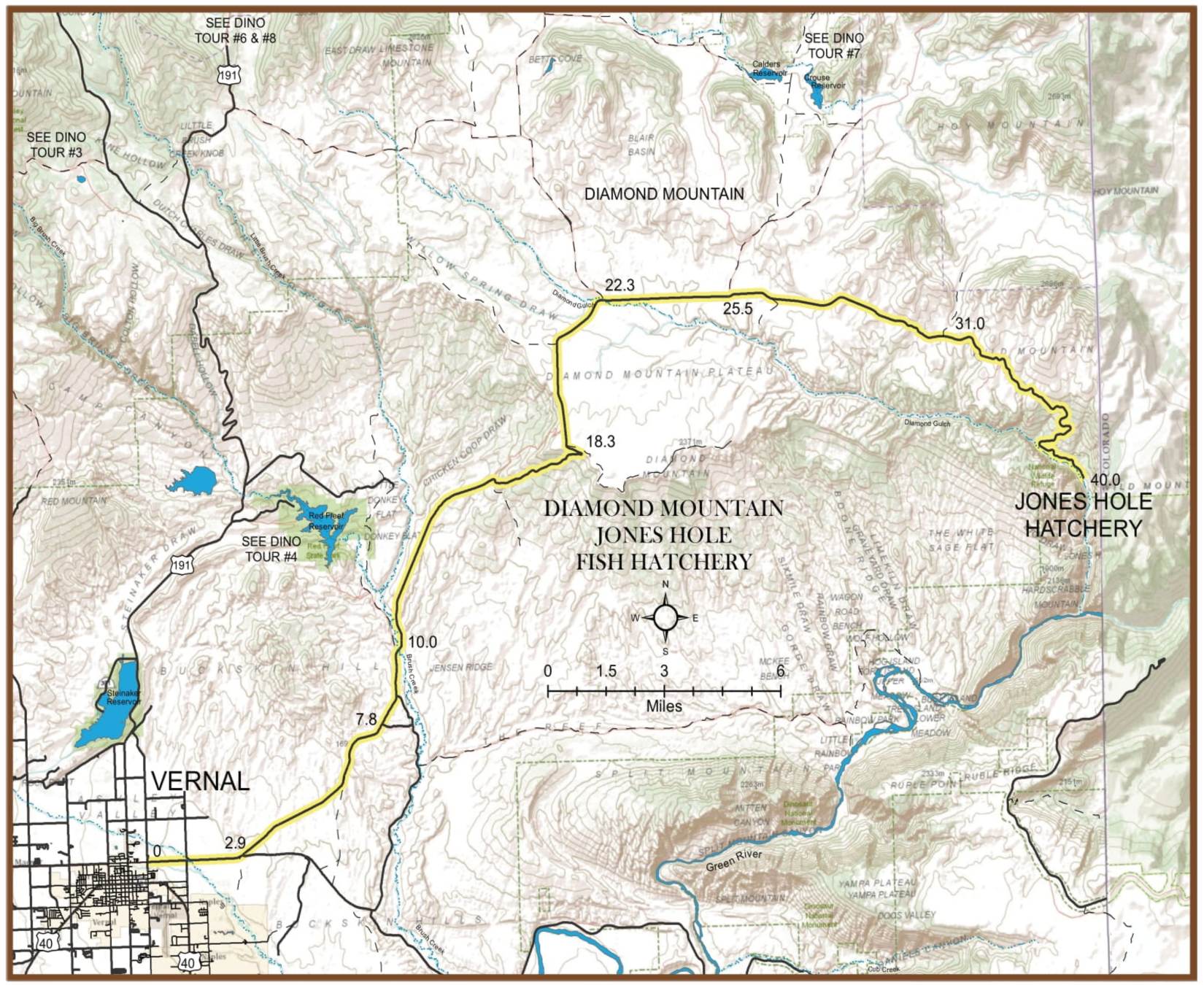Indian Canyon Scenic Byway
This route was designated as a State of Utah Scenic Byway in December of 1990. Stretching southwest from the town of Duchesne, the Byway follows the canyon bottom through a colorful canyon bordering Indian Creek. The route continues through the Ashley National Forest and a unique display of geologic formations and vegetative types from pinon pine and juniper on southeast facing slopes to aspen, white fir, Engelmann spruce, and Douglas fir on northwest facing slopes. Take notice of the elk and deer often seen along this portion of the Byway, and the contrasts of foliage which are particularly beautiful during autumn months. The Byway peaks at Indian Creek Pass which is 9,100 feet in elevation. At this summit, the traveler is rewarded with magnificent views of forested slopes and deep, rugged canyons. From the summit, the road descends along Willow Creek featuring open vistas,passing through the Roan and Book Cliff formations. Oil and gas sites and coal mine operations will be seen at thesouthern end of the route. Look for the conveyor beltstransporting coal to the Denver & Rio Grande Railroadtracks and the coal-fired power plant operated by UtahPower. The Byway joins U.S. Highway 6 three miles northof the historic mining town of Helper. Be sure to visit Helper and step back in time to the era of mining and locomotives. Take the time to visit the Western Mining and Railroad Museum.

Mileage (The Byway is 43.5 miles long and requires one hour of driving time)
0 Start from the junction of US Highway 40 and Indian Canyon Scenic Byway (US Highway 191) traveling south towards Helper and Price, Utah.
0.3 Left turn leads to Duchesne County Fairgrounds, city stables, city park and pavilion, and Strawberry River boardwalk.
0.5 Bridge over the Strawberry River. This bridge is one mile upstream from the confluence of the Duchesne and Strawberry Rivers. These two rivers flow into the Green River which is the largest tributary of the Colorado River.
2.3 Sowers Canyon access on the left. This access road passes through Ute Indian Tribal lands for nine miles before reaching Sowers Canyon. High-clearance vehicles are recommended for those traveling this route. Sowers Canyon is similar to Indian Canyon in vegetation and topography.
10.0 Right Fork of Indian Canyon. This road is eight miles long and dead-ends 13 miles from its junction with Indian Canyon Scenic Byway. Passes through colorful rock formations and steep side canyons.
15.8 Forest boundary. The Byway enters the Ashley National Forest at this point.
22.1 Spring Hollow. This is the crossing location of historic cattle drives in this area.
22.8 Indian Canyon Guard Station. Look to the east or left to view a historic Forest Service guard station. The road next to the station leads to an old logging road and trail.
23.0 Grass Hollow. This is the location of a hiking and horse trail that leads to the Right Fork of Indian Creek mentioned under milepost 10.0.
28.0 Indian Canyon summit. Look for the four-wheel drive road and hiking trail that provide views of the headwater drainage of Avintaquin Canyon, Reservation Ridge, Slab Canyon, and the mountains of the Uinta National Forest.
28.3 Argyle Canyon Road. Travels eastward to Nine Mile Canyon. High-clearance vehicles are recommended.
29.2 Reservation Ridge. The road to the right or west leads to Avintaquin Campground and Picnic area, continuing along the Reservation Ridge for 22 miles to Timber Canyon.
35.0 Road leading to Pine Canyon and Nine Mile Canyon. Notice the gas well sites on the slopes to the south. These slopes are known as the West Tavaputs Plateau. High-clearance vehicles are recommended.
35.6 State of Utah Historic Monument. Erected in 1918 by inmates of the Utah State Penitentiary, honoring Simon Bamberger, Governor of Utah from 1917-1920. Under State law passed in 1917 permitting prisoners to work on state roads, the prisoners participated in roadwork on the Castle Gate-Duchesne Road during the summer of 1917 and 1918. The stone was obtained from the Kyune Stone Quarries in the hills northwest of the monument.
35.7 Road crossing the northwest end of the West Tavaputs Plateau, terminating at a junction with US Highway 6 in the Price Canyon area. This road is paved, but not maintained during winter months.
42.1 Pull out and view of Willow Creek Coal Mine. Coal mining operations, including the portal (mine entrance) and conveyor belts for transporting coal to the mouth of the canyon. Notice the coal seams that are visible from the pullout, some of which are red in color due to oxidation. Coal mining in this area dates back to 1883.
42.4 Historic Cemetary. The historic Castle Gate Cemetery, with a monument listing all those buried at the site. The first recorded burial in the cemetery was for Vesta J. Davis, a baby born January 14, 1891, who died October 20, 1891. The last burial was Mary Pero in 1953. Burials are no longer permitted due to incomplete plat records. In 1996 with the combined efforts of Carbon County, Americorp, and the Carbon County Historical Society, the fence around the cemetery was rebuilt.
43.3 Castle Gate coal-fired power plant owned and operated by Utah Power and the crossing of the Denver & Rio Grande railroad line. Unit one of this power plant went online in 1954. The plant has been in continuous operation since that time. Unit two came online in 1956. The coal used in this plant came from Castle Gate Coal Mine until the closure of the mine. Coal is now purchased from various coal mines in the area. The total generation is 190 megawatts. The plant supplies power via two high-tension lines to the Provo/ Salt Lake City areas. The words “Castle Gate” refer to Castle Gate Rock, a natural sculpture to the south of the power plant. Look for it on the east side (left side) of US Highway 6 on the way to Helper.
43.5 Junction of Indian Canyon Scenic Byway with US Highway 6. Left turn to Helper and Price, Right turn to Provo and Salt Lake City.
